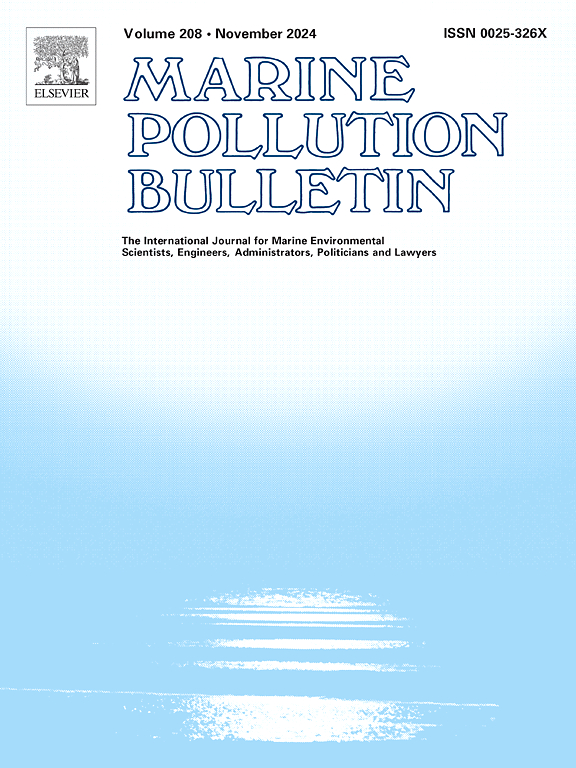英国泰晤士河口盐沼和城市支流沉积物芯中的微塑料污染:时空累积趋势。
IF 5.3
3区 环境科学与生态学
Q1 ENVIRONMENTAL SCIENCES
引用次数: 0
摘要
采用密度分离和ATR-FTIR光谱技术对伦敦巴金和鲍溪、肯特郡斯旺斯库姆盐沼和埃塞克斯郡泰晤士河口的雷汉姆盐沼潮汐支流沉积物岩心中的微塑料进行了定量分析。所有8个支流核心均以低密度微塑料、聚丙烯、聚乙烯和聚苯乙烯为主,在与泰晤士河汇合处观测到的丰度最高(平均360.0±12.0个颗粒,100 g-1 dwt (0-10 cm深度)),这是由于雨水罐联合下水道溢流输入。高沼泽植被带的Swanscombe盐沼岩心微塑料含量最高(0 ~ 10 cm深度平均为267.1±10.2个100 g-1 dwt)。沼泽沉积物放射性核素测年(Pb210, Cs137)表明,至少从20世纪50年代末开始,沉积物中就存在微塑料,并且向表层沉积物的丰度增加。泰晤士河的潮汐支流和盐沼就像天然的过滤器,随着时间的推移,盐沼会积累微塑料,而支流既可以储存微塑料,也可以储存微塑料,这取决于个别地点的条件和水动力的变化。本文章由计算机程序翻译,如有差异,请以英文原文为准。
Microplastic pollution in salt marsh and urban tributary sediment cores of the River Thames estuary, UK: Spatial and temporal accumulation trends
Microplastics in sediment cores from urban tidal tributaries, Barking and Bow Creek-London and salt marshes Swanscombe, Kent, and Rainham, Essex, Thames estuary (UK), were quantified by density separation and ATR-FTIR spectroscopy. All eight tributary cores were dominated by low-density microplastics, polypropylene, polyethylene, and polystyrene with the greatest abundance (mean 360.0 ± 12.0 particles 100 g−1 dwt (0–10 cm depth) observed furthest from the confluence with the Thames due to storm tank combined-sewer-overflow input. Salt marsh core microplastics were highest at Swanscombe (mean 267.1 ± 10.2 particles 100 g−1 dwt at 0–10 cm depth) in the high-marsh vegetation zone. Marsh sediment radionuclide dating (Pb210, Cs137) suggested a presence of microplastics in the sediment since at least the late 1950s, with increasing abundance towards surface sediments. Tidal tributaries and salt marshes of the Thames act as natural filters, with salt marshes accumulating microplastics over time and tributaries acting as both stores and sources depending on individual site conditions and hydrodynamic variability.
求助全文
通过发布文献求助,成功后即可免费获取论文全文。
去求助
来源期刊

Marine pollution bulletin
环境科学-海洋与淡水生物学
CiteScore
10.20
自引率
15.50%
发文量
1077
审稿时长
68 days
期刊介绍:
Marine Pollution Bulletin is concerned with the rational use of maritime and marine resources in estuaries, the seas and oceans, as well as with documenting marine pollution and introducing new forms of measurement and analysis. A wide range of topics are discussed as news, comment, reviews and research reports, not only on effluent disposal and pollution control, but also on the management, economic aspects and protection of the marine environment in general.
 求助内容:
求助内容: 应助结果提醒方式:
应助结果提醒方式:


